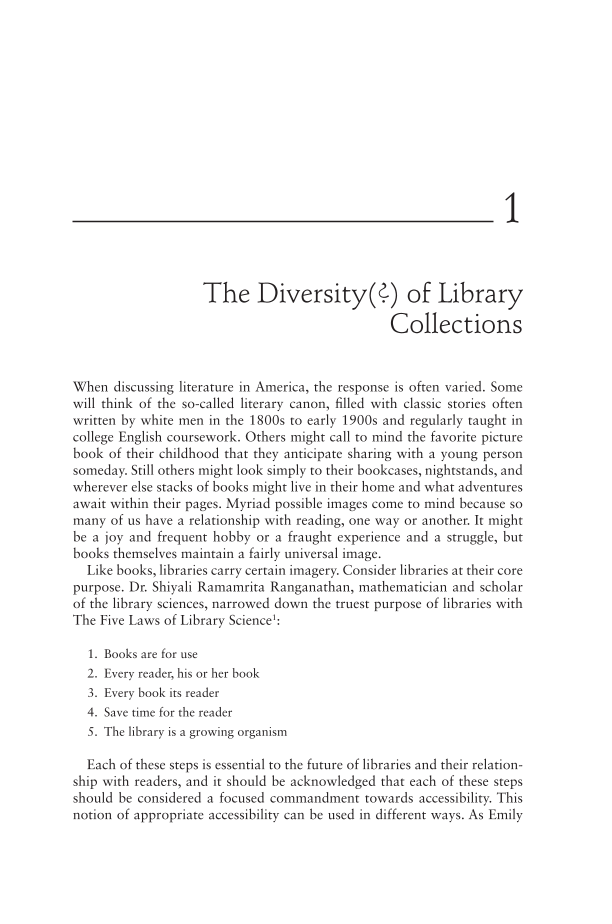1 The Diversity(?) of Library Collections When discussing literature in America, the response is often varied. Some will think of the so-called literary canon, filled with classic stories often written by white men in the 1800s to early 1900s and regularly taught in college English coursework. Others might call to mind the favorite picture book of their childhood that they anticipate sharing with a young person someday. Still others might look simply to their bookcases, nightstands, and wherever else stacks of books might live in their home and what adventures await within their pages. Myriad possible images come to mind because so many of us have a relationship with reading, one way or another. It might be a joy and frequent hobby or a fraught experience and a struggle, but books themselves maintain a fairly universal image. Like books, libraries carry certain imagery. Consider libraries at their core purpose. Dr. Shiyali Ramamrita Ranganathan, mathematician and scholar of the library sciences, narrowed down the truest purpose of libraries with The Five Laws of Library Science1: 1. Books are for use 2. Every reader, his or her book 3. Every book its reader 4. Save time for the reader 5. The library is a growing organism Each of these steps is essential to the future of libraries and their relation- ship with readers, and it should be acknowledged that each of these steps should be considered a focused commandment towards accessibility. This notion of appropriate accessibility can be used in different ways. As Emily
Document Details My Account Print multiple pages
Print
You have printed 0 times in the last 24 hours.
Your print count will reset on at .
You may print 0 more time(s) before then.
You may print a maximum of 0 pages at a time.

































































































































































